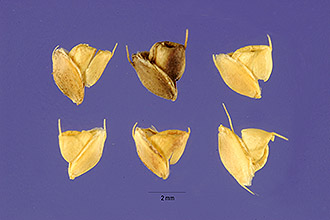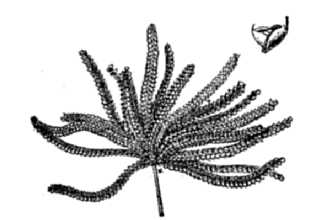Hooded Windmill Grass
Scientific Name: Chloris cucullata Bisch.

| General Information | |
|---|---|
| Usda Symbol | CHCU2 |
| Group | Monocot |
| Life Cycle | Perennial |
| Growth Habits | Graminoid |
| Native Locations | CHCU2 |
Plant Guide
Use soil moisture sensors to measure the soil moisture of Hooded Windmill Grass.
Fact Sheet
Alternate Names
hooded windmill grass
Uses
Hooded windmillgrass is grazed moderately by all livestock and the forage quality is fairly high. The amount of forage produced is relatively low compared with that of taller growing associated grasses. It provides fair-quality forage during the winter, but should be supplemented with a protein concentrate.
Status
Please consult the PLANTS Web site and your State Department of Natural Resources for this plant’s current status, such as, state noxious status and wetland indicator values.
Description
Grass Family (Poaceae), Hooded windmillgrass is a native, warm-season, perennial bunch grass, The height is between 1 and 2 feet, The leaf blade is 2 to 6 inches long, folded to a sharp point, and bluish green in color, The leaf sheath is mostly basal, shorter than internodes, and compressed or flattened, The seedhead is 7 to 12 purplish spikes 1 to 2 inches long, clustered at end of stem, The spikes turn straw yellow to brownish gray at maturity and the lemma of each spikelet has a short awn, Use soil moisture sensors to measure the soil moisture of Hooded Windmill Grass., Distribution: For current distribution, please consult the Plant Profile page for this species on the PLANTS Web site,
Management
Because of low productivity, this grass is seldom a key management species. When it is, no more than 50 percent of the current year's growth by weight should be removed by grazing. From Hitchcock (1950) @ plants.usda.gov
Establishment
New growth starts in early spring and stays green until fall. It may produce several seed crops during the growing season, the earliest one about June. Sometimes this plant has a short rhizome. The windmill appearance of the seedhead makes identification easy when flowering. It is adapted to acid to neutral medium- and coarse-textured soils. It does not do well on calcareous or clay soils. Cultivars, Improved and Selected Materials (and area of origin) Please contact your local NRCS Field Office.

